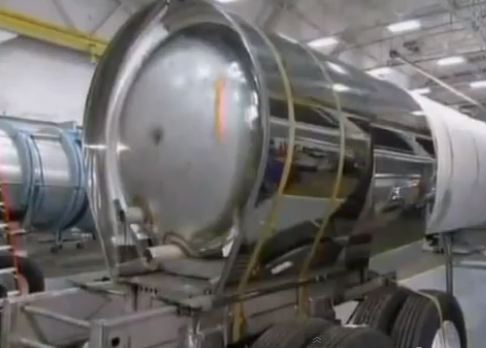In the material handling equipment world, there are certainly times when hauling materials completely free of contaminants is of the utmost importance. Case in point – the usage of the tanker truck, which primarily transfers a liquid of some form to and from manufacturers and suppliers. Whether it’s hazardous or not, the stainless steel containers used in transit can carry up to 12,000 gallons of liquid and are essential to material handling processes used around the globe.
To start, a laser-cutting machine is used to cut the tanker trailer’s frame out of a sheet of steel. A plasma seam welder handles the larger pieces of steel with ease. After evenly sanding the metal, the steel is rolled into it’s familiar cylinder shape by a machine. Later in the process, steel rings are added to the cylinder for reinforcement.
Tank heads are then welded onto the large cylinder. Polyurethane bands are then attached to the cylinder, a necessary step in order to mount fiberglass insulation to the tank. The fiberglass insulation keeps the liquid inside either cool or warm, depending upon the product. The insulation is then protected by a thin layer of shiny stainless steel surrounding the cylinder.
Next, aluminum fenders are installed over the truck’s tires. A stainless steel ladder is attached to the side of the cylinder, giving access to the manhole on top.
To finish, reflective tape is added to the tank for safety precautions on the road. The lighting mechanisms are installed, all tank operations are tested, and the tanker truck is finished – ready to tackle any material handling job.
Be sure to stop by again soon for more news and analysis on warehouse safety and production!

